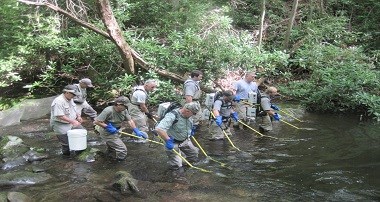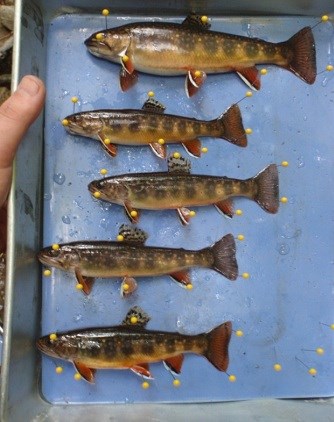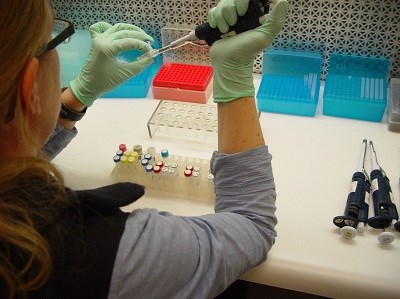
Casey Weathers photo Given these human and natural disturbances, numerous populations of brook trout in the park have become isolated from other fish communities, causing them to become uniquely adapted to a very specific niche in the aquatic habitats that they occupy.

NPS photo Restoration projects at Lynn Camp Prong and LeConte Creek sourced brook trout from several nearby streams in the park to strengthen brook trout populations at these sites. However, brook trout collected during monitoring for genetic studies years after their introduction showed little to no breeding occurred between trout from each different stream population, despite the fact that they were all brook trout from nearby watersheds.

Casey Weathers photo For this study, fisheries scientists were interested in seeing whether or not brook trout from different watersheds in the park display physiological changes that are only unique to that specific stream or region. These variations in external appearance are otherwise known as morphology. By definition, morphology is labeled as "the branch of biology that deals with the form of living organisms and with relationships between their structures".

Casey Weathers photo On a larger scale, these differences are not significant in relation to the overall identification of the fish; rather these differences are considered "phenotypic plasticity" or simply the population's ability to adapt to local environmental differences from stream to stream. In other words, a brook trout caught at Cosby Creek is still classified the same species of fish as a brook trout caught at Lynn Camp Prong.
Going forward, GRSM biologists will continue to manage brook trout populations at the sub-watershed level. This data allows for fisheries managers to cater their techniques for the specific river of stream that they are focusing on. For example, if brook trout are restored in a stream located at 3,000-3,500 feet elevation, biologists would seek source stock from the closest sub-watershed in that elevation range to transplant to the newly restored section.
The collection of morphological data provides further fisheries management insights that help biologists manage the fisheries of the national park. These data can be used to enhance brook trout restoration and monitoring as well as provide excellent angling opportunities for present and future generations.
For more information on this topic, visit the following links: https://irma.nps.gov/App/Reference/Profile/2180856
Prepared by Quinn Buckley
|
Last updated: August 18, 2015
